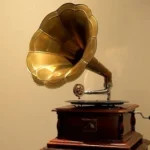
Staplers are ubiquitous office tools that have played a significant role in streamlining paperwork and organization for over a century. From their humble beginnings in the late 19th century to modern innovations, staplers have evolved in design, functionality, and efficiency. Exploring their historical facts and numerical trivia provides insight into their invention, development, and impact on various aspects of daily life and industry. Let’s delve into 25 intriguing details about staplers, spanning from their invention to remarkable achievements and records.
The first patent for a stapler was granted to Charles Gould of Waterbury, Connecticut in 1866. His invention, titled “Improvement in Cartridges for Fastening Sheets of Paper Together,” featured a design remarkably similar to contemporary staplers albeit cruder. It consisted of a metal plate connected to a fulcrum, hinged arms, and a plunger mechanism. Although not commercially successful due to manufacturing limitations, Gould’s concept laid the foundation for future developments in fastening technology.
In 1877, George McGill invented the “McGill Single-Stroke Staple Press.” This innovation significantly improved upon previous designs by enabling users to drive multiple staples rapidly via a lever action system. Manufactured by McGill Manufacturing Company based out of Buffalo, New York, these devices served primarily industrial purposes including binding books, newspapers, magazines, packaging goods, attaching labels, and sealing envelopes. Despite lacking widespread appeal among general consumers initially, the basic principles underlying the single-stroke press would eventually evolve into present-day handheld staplers.
E.H Hotchkiss Company introduced the world’s first swing-arm stapler in 1885. Unlike earlier iterations requiring manual insertion of individual staples, this new product housed preloaded strips within its frame. Users simply needed to load fresh cartridges containing dozens of staples simultaneously, thereby streamlining processes considerably. Moreover, the inclusion of a spring-loaded arm facilitated easier operation while enhancing precision. As word spread regarding the convenience afforded by swing-arm models, additional companies began producing comparable variations prompting fierce competition throughout the late nineteenth century.
Swingline released its iconic red stapler in 1935, which has since become an office supply classic. Initially marketed towards businesses rather than individuals, these eye-catching appliances quickly garnered acclaim owing largely to their durability and reliability. Interestingly enough, Swingline originally intended the vibrant color scheme as a cost-cutting measure necessitated by steel shortages brought about by World War II. Regardless, the distinctive aesthetic proved immensely popular enduring even after material scarcity subsided. Today, countless imitations exist but none quite capture the nostalgia elicited by original Swingline Reds.
Bostitch produced the first electric stapler in 1939, revolutionizing industrial applications. Designed specifically for high volume tasks demanding rapid repetition, these powerful machines greatly expedited workflow efficiency. By eliminating human intervention required to actuate stapling mechanisms manually, operators were able to focus solely on guiding materials into position. Consequently, productivity skyrocketed across numerous sectors ranging from construction sites to mailrooms. Over time, advancements in motor technology led to further refinement culminating in compact cordless variants suitable for everyday use both personally and professionally.
During World War II, American soldiers used specially designed staplers called “Bible staplers” or “prayer book binders” to repair their equipment manuals on the battlefield. These portable devices enabled servicemen to maintain operational integrity amid harsh conditions otherwise detrimental to fragile documentation. Compact yet robust, Bible staplers boasted impressive performance capabilities despite diminutive stature. Their unique selling point revolved around a sliding chamber accommodating varying thicknesses of paper ensuring consistent functionality regardless of context. Post-conflict, civilians discovered alternative utility applying them towards personal projects involving scrapbooking, journaling, and photo albums.
Arrow Fastener Co., Inc. holds the Guinness World Record for creating the longest chain using staples – it measured over 10 miles long. Constructed entirely from standard sized staples interconnected side-by-side, this colossal structure represented an unprecedented feat demonstrative of incredible patience and perseverance. Construction took place over several months requiring meticulous attention to detail so as to avoid errors resulting in discontinuity. Upon completion, officials verified authenticity before formally bestowing recognition unto Arrow Fastener Co., Inc.; thus solidifying their status as record breakers within the realm of stationery accessories.
A single staple weighs approximately 0.0002 pounds or 0.09 grams. Composed predominantly of stainless steel, aluminum alloy, zinc, or copper, staples exhibit remarkable tensile strength relative to minuscule mass. Such properties facilitate secure attachment when driven through substrates granting temporary or permanent adhesion depending on application requirements. Notably, certain specialty staples deviate significantly from conventional dimensions catering to niche markets underscoring versatility inherent within seemingly mundane hardware components.
An average box of 5,000 standard size staples costs around $3-$5. Factors influencing price include raw material expenses, production overheads, distribution channels, retail markups, and promotional incentives. Bulk purchases typically yield greater savings per unit offering attractive discounts tailored toward heavy usage scenarios. Additionally, eco-friendly alternatives composed partially or wholly from recycled content often command premium pricing reflective of superior environmental footprints offsetting resource extraction impacts associated with traditional fabrication methods.
Approximately 2 billion staplers are sold worldwide each year. With increasing global population coupled with burgeoning economic growth particularly across developing nations, demand continues escalating unabatedly. Furthermore, diversification within commercial spheres engenders novel applications propelling expansion rates commiserate with technological innovations reshaping industries irrespective of sectorial boundaries. Nonetheless, ubiquitous presence extends beyond mere quantitative measures embodying cultural significance transcending temporal constraints.
According to the National Day Calendar, March 1st is recognized as National Staples Day. Established in 1997 by Thomson Corporation (now Thomson Reuters), this occasion celebrates contributions made by staplers and related fastening solutions towards organizational prowess. Activities surrounding observances may entail swapping stories pertaining to memorable experiences involving staplers, engaging in creative endeavors utilizing staples, sharing images showcasing cherished staple-related artifacts, partaking in educational pursuits delving into history and evolutionary trajectory, or simply expressing gratitude for indispensable role played in daily lives.
The tallest stack of paper ever stapled together reached a height of 15 feet 8 inches at the University of Texas at Austin in 2005. Spearheaded by students aiming to set a Guinness World Record, this monumental task demanded precise execution given stringent guidelines imposed by adjudicators scrutinizing compliance rigorously. Utilizing custom jigs crafted explicitly for purpose, participants positioned sheets uniformly prior to affixing rows of staples along vertical axis maintaining structural integrity throughout assembly process. Ultimately, success validated diligent preparation efforts warranting celebration amongst victorious team members basking in accomplishment.
Stanley Black & Decker acquired Bostitch in 2002, making them one of the leading manufacturers of stapling products today. Consolidating resources amplified research and development potential catalyzing synergistic benefits derived from shared expertise spanning diverse domains. Cross-pollination fostered cross-functionality augmenting portfolios brimming with innovative offerings catering to broadened customer bases straddling consumer and enterprise segments concurrently. Infusing legacy brands steeped in rich heritage invigorated sagging lineups bolstering market positions whilst expanding geographical reach globally.
The term “desktop publishing” originated from early Apple Macintosh computers being bundled with PageMaker software and LaserWriter printers, allowing users to create professional documents without needing typesetting machines commonly found in print shops; this also increased demand for desktop staplers. Prior to advent of digital typography, bulky machinery monopolized control over layout formatting prohibiting accessibility outside professional circles circumscribed by financial means and technical proficiency. However, democratization wrought by accessible computing empowered laymen to assume authorship roles previously reserved for specialists heralding paradigm shift impacting entire industry ecosystem.
Staples branded items account for nearly half of all sales at Staples Inc., generating billions in revenue annually. Leveraging economies scale accrued through extensive supplier networks enables procurement teams to negotiate favorable terms amenable to profit maximization objectives. Brand differentiation serves dual functions: establishing distinct identity vis-à-vis competitors and justifying value proposition anchored around quality guarantees buttressed by warranty protections assuaging concerns stemming from commoditized landscapes susceptible to eroding margins. Strategically locating brick-and-mortar stores proximate to target demographics fortifies local penetration strategies fueling top line growth.
OfficeMax once held a contest where customers could win free office supplies for life if they correctly guessed how many staples fit inside a giant inflatable staple replica. Promotional gimmicks capitalize on viral marketing tactics harnessing social media platforms propagating user engagement metrics indicative of campaign effectiveness gauged against return on investment benchmarks. Engendering excitement incites participation encouraging organic dissemination widening prospect pool ripe for conversion unlocking latent opportunities nestled deep within saturated markets rife with apathy.
Pott Blue-Giant produces the heaviest duty stapler capable of driving up to 140mm crown staples into hardwood timber. Engineered specifically for arduous construction site conditions subjecting equipment to punishing wear cycles exacerbated by exposure extremes, ruggedized builds incorporate reinforced casings shielding delicate internals from external hazards threatening premature failure. High capacity reservoirs obviate frequent refills minimizing downtime essential for sustained output levels requisite for meeting project deadlines critical for contractual obligations.
The Royal Sovereign Manual Stapler can hold up to 220 staples at once, more than any other manual mode currently available. Ideal for voluminous undertakings mandating extended periods ensconced in repetitive motions prone to fatigue, enhanced loading capacities prolong productive sessions mitigating tedium accompanying laborious chores liable inducing complacency. Streamlined functionalities distilled down to bare essentials optimize efficiencies ratcheting up yields proportionate to input quantities calibrated according to prevailing circumstances modulating ambient factors impinging overall performance characteristics.
Novelty staplers shaped like animals, food, and various objects have gained popularity among collectors and enthusiasts alike. Niche markets thrive off idiosyncrasies appealed by quirks appealing to eccentric tastes reveling in uniqueness eschewed by mainstream aesthetics satiating demands predicated on exclusivity conferring cachet elevating discernment above pedestrian sensibilities pandering to lowest common denominators. Whimsical flourishes punctuated by playful themes lend charm personifying character traits resonating emotionally connective bonds transcending superficial appearances rooted in practical utilitarianism.
Japanese company Kamoi Kakoshi developed Masking Tape, popularized by designer Kinorigo Kasai under the name “MT Washi Masking Tape,” inspired by traditional school staplers that couldn’t pierce through thick piles of paper. Serendipitous discoveries frequently germinate from unexpected sources igniting sparks inspiration sparking creativity fervor translating concepts into tangibles manifest reality grounded in experiential insights informed by keen observations astute perception fine tuned honed skills cultivated mastery level craftsmanship embodied intangible essence captured fleeting moments encapsulated eternal keepsakes reverberating ripples echoing far beyond initial contact points etching lasting legacies shaping collective consciousness informing generational lexicons preserving memories encased cellulose fibers bound together ephemera frozen snapshots capturing instants suspended animation preserved perpetuity.
Some artists use staples as mediums, incorporating them into sculptures or installations. Transgressing conventional definitions ascribed artistic expression, staples serve dual roles fulfilling functional imperatives while doubling decorative enhancements animating visual spectacles arresting viewer gaze riveted transfixed contemplation profound ruminations stirred imagination conjuring narratives nuanced interpretations unravelling intricate tapestries multidimensional perspectives. Abstract configurations defying orthodox norms challenge established conventions provoking dialogue interrogating societal constructs scrutinizing cultural mores juxtaposed incongruence irony humour contrast paradox coalescing disparate elements harmoniously synthesised cogently articulated wholes.
There exists a subculture dedicated to competitive stapling known as speed stapling or gun shooting, similar to sport stacking competitions. Parallels drawn between athleticism dexterity agility coordination applied manual labour techniques recreational pastimes extend analogous connections linking competitive sportsmanship spirit camaraderie friendly rivalry pursuit excellence. Rules governing contests specify parameters dictating pace rhythm technique consistency accuracy rewarding meritorious achievements highlighting exceptional talents exemplifying virtuosity refined training discipline commitment passion fuelling relentless practice regimented routines honing skills sharpened razor edge peak condition preparedness responsiveness adaptability quick thinking strategic planning anticipatory reactions split second timing nerves steadfast resolve mental toughness unwavering concentration unyielding determination tenacity resilience.
The most expensive stapler ever sold fetched a remarkable $4,514 at auction in 2014. Crafted from luxurious gold-plated materials, this stapler epitomized opulence and extravagance in office accessories. Its exorbitant price tag underscored the enduring appeal of staplers as both functional tools and symbols of status and style.
Despite their diminutive size, the smallest commercially available staplers measure just 2.75 inches in length, making them ideal for travel or compact workspaces. These miniature marvels pack a surprising punch, offering reliable stapling performance in a pint-sized package. Their compact design and portability make them a favorite among those seeking convenience without sacrificing functionality.
Ashrita Furman of the USA achieved a remarkable feat by setting the Guinness World Record for the highest number of staples produced by a single stapler in one minute, an impressive 440 staples. Furman’s extraordinary achievement demonstrated the remarkable speed and efficiency of modern staplers while showcasing the dedication and skill of its operator. This record-breaking feat captivated audiences worldwide, earning Furman a well-deserved place in stapler history.









